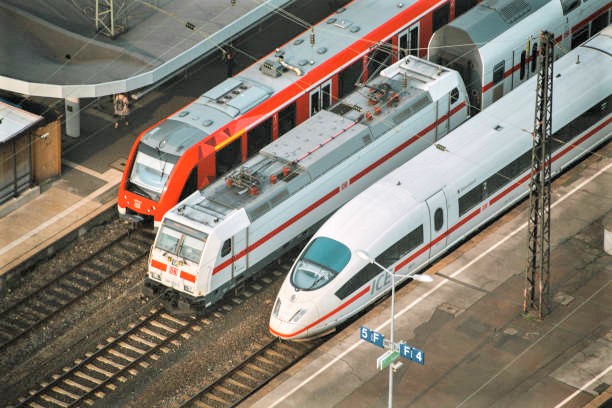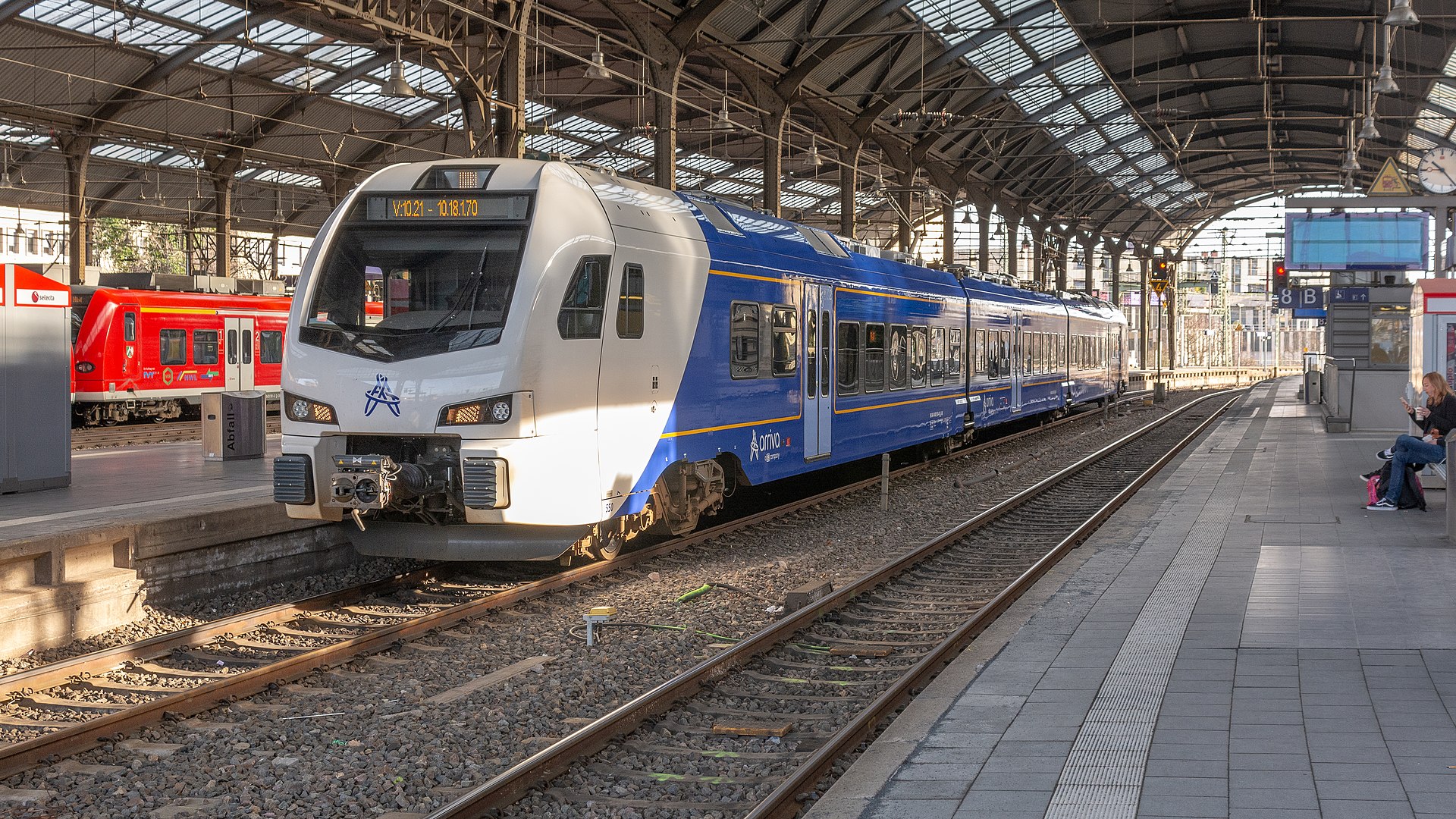15/12/2022 – By Frédéric de Kemmeter – Railway signalling and freelance copywriter – Suscribe my blog
(Version en français)
🟧 Back to homepage 🟧 See our brief news 🟧 UK 🟧 China 🟧 Japan 🟧 USA 🟧 the rest of the world
Austria – Baltic States – Czech Republic – Finland – France – Germany – Italy – Netherlands – Norway – Poland – Portugal – Republic of Ireland
– Slovakia – Spain – Sweden – Switzerland – Ukraine
Cross-border rail traffic is a recurring topic and receives a lot of attention. Or not enough, as the case may be. Good intentions to simplify things often come up against very heavy legal regulations for cross-border rail operations. On top of that, each operator develops its own IT system, which makes a common distribution difficult.
This is still too often forgotten, but the railways are primarily a matter of national policy and historically, companies have had a clear and sole task of looking after citizens as a priority. This is also why ticketing, which has a social – and therefore political – character, is so different between states in Europe.
The various public rail operators in Europe are subject to commercial laws for their sales. The SNCF, for example, is subject to the provisions of the Commercial Code relating to public limited companies and is registered with the Bobigny Trade and Companies Register (Paris in fact).
Focus on domestic markets
But there’s another reason. For an incumbent rail operator, the domestic ticketing revenues can represent 70 to 90 per cent of company’s total revenue. Deutsche Bahn carries more than a billion people a year on the local and regional lines, which is far more than it does on international lines, which is considered a ‘residual market’.
The consequences of all this are that:
- incumbents have no incentive to develop an international IT system (they use different APIs);
- every Minister of Transport is more concerned about knowing exactly what the national subsidies he has given are used for and is therefore not so much concerned with international relations.
At the local level, the impact of this national policy is that rail operators can only sell within the national territory – for which they are mandated – and their area extends to the last station before the border.
For example, the Dutch OV-chipkaart is not valid in Belgium or Germany, while the Belgian Multi-pass is not valid in the Netherlands, Germany or France. The famous German 49-euro ticket does not cover cross-border journeys and ‘only’ takes you to last German station before exiting the country. These are all things that each respective government decides and subsidises. For a long time, a very heavy legal framework has been developed to regulate the administrative affairs of international rail transport between two cross-borders stations, even over a very short distance (in yellow on the diagram). This is shown in the diagram below:

In blue: you can choose from the whole range of SNCF fares, passes and other season tickets on French territory (e.g. the SNCF Avantages et Libertés passes)
In red: you choose the full range of DB fares, passes and other season tickets on German territory (e.g. the DB Bahn Card, or the monthly regional ticket at €49).
In yellow: the full fare subject to a scheme with the barbaric name of CIV/CIT.
Fortunately, there are two cases where one does not have to buy a specific international ticket between two border stations:
- When the border railway station is common to two countries (Basel SBB, Kufstein, Modane, Brennero, etc)
- When the fare is fully covered on the complete cross-border segment, for example the Saar-Lor-Lux-Ticket
The problem of the CIV ticket no longer arises and at these stations, two public service tariffs can be « stuck » together, a French pass with a German, Swiss or Italian pass.
One example is TiLo, a tariff agreement between Ticino and Lombardy. This is also the case between the Dutch province of Limburg and North Rhine-Westphalia, for the Maastricht-Aachen trains.
However, even with these good examples, it is still necessary to go to each operator’s website to get an online ticket.
Towards a one-click purchase?
There are many different opinions on this issue. Some explain that there are too many stations and fare ranges to fit into a European-wide IT program. The age of a child sometimes differs from one country to another (12, 14-year-old?). The definition of a “student” is not the same everywhere and depends on national social policies, etc.
Others argue that ticketing and website are an important marketing tool, and all of that is primarily aimed at regular customers, not occasional tourists.
Who will cover the cross-border deficit?
The word « deficit » does not have the same meaning on either side of the border. The calculation of the kilometre charge differs from one country to another for a number of reasons linked to the allocation of subsidies (a very political thing), which means that, in the case of cross-border traffic, each country will pay for « its » calculation method and not that of its neighbour.
It also depends on the institutional architecture. For some countries, it is the national level that has to negotiate the deficit with the neighbouring country, which sometimes involves tactical games with the parties in power, which may block the process for reasons far removed from rail. Rail operators are then reduced to using the famous CIV to cross borders, which is not in the interest of citizens.
The issue of this territoriality responds to very varied criteria such as the accounting of companies or compensation in the event of malfunctions. Each operator logically defends its interests. The fact that, in the event of correspondence, each operator is held separately responsible is part of a certain logic, as the faults of one cannot be attributed to the others.
This brief overview provides a better understanding – without necessarily approving it – of the political backyard and the difficulty of establishing cross-border rail policies, especially at local level.
The institutional complexity can undermine the best of intentions (« so much for so little »). The fact remains that a few kilometres from the border stations, roads and motorways carry thousands of people every day by cars, who do not have to worry about all the above… 🟧

Related topics:
 Germany – After the decision on the 49-Euro-Ticket, industry between euphoria and scepticism
Germany – After the decision on the 49-Euro-Ticket, industry between euphoria and scepticism
07/11/2022 – The German’s transport industry is vacillating between enthusiasm and disappointment after the decision on the 49-Euro-Ticket. On Wednesday evening, the Minister Presidents of the federal states had agreed on the successor solution to the 9-Euro-Ticket – and also found a compromise in the dispute over…
 D-Takt: the great challenge of the clockface timetable 1/2
D-Takt: the great challenge of the clockface timetable 1/2
05/02/2021 – A train every half hour from city to city and from village to village. Convenient transfers without long waiting times, even in the countryside. Riding a train anywhere in the country would be as easy as riding the S-Bahn in the cities today. It is the Deutschlandtakt, the german’s clockface timetable.
 Reconnecting cross-border railway services
Reconnecting cross-border railway services
10/05/2020 – It isn’t new: borders are not only used to delimit a territory, but above all to circumscribe a social policy and the societal habits of a nation. It is this reality that makes the viability of cross-border rail services so difficult. Usually people don’t understand why there are so many differences from one country to another. But it is not very difficult to explain.
15/12/2022 – By Frédéric de Kemmeter – Railway signalling
Suscribe my blog


Vous devez être connecté pour poster un commentaire.